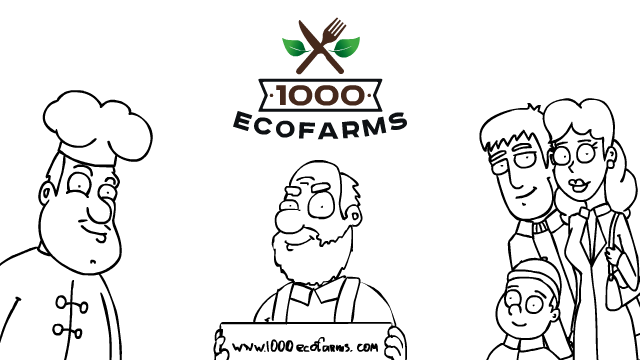I want to tell you about growing of plants, care for them by the way of hydroponic hobby.
At first, you should know that self-designed hydroponic systems were created in 1940`s. A bucket full of seeds was plunged into nutrient solution. And then they were replaced into growing bed with substrate. Growing process depends on light, temperature and stage of plant growth. That system is very simple and productive, but it needs much hobbyist time.
In course of time plant growing became automatically, by means of pumps, plastics, timer and drip irrigation supplies. Instead of soil were applied vermiculite, perlite, bark, mixture of rice hulls.
Best known substrates are perlite and vermiculite. It will be useful if you want to grow lettuce, beets, arugula, mustards, spinach and other herbs.
20 years after hydroponic shops were appeared. Nowadays hydroponic hobbies become very popular and there are many kinds of it.
Let's talk about numerous labels and stickers that we see on food products in shops and supermarkets. You can often find "organic product", "natural product", "free-range" and "non-GMO". If you want to be a knowledgeable consumer important to know differences between these concepts.
The most important thing to understand and to remember that "natural" does not mean organic. "Natural" is an unregulated term and can be used on any product, while "organic" means a set of production standards.
If you see on the meat or poultry label "free-range" it means that the animal was not confined to the cells and moves freely on a certain territory, but does not mean that it was grown organically. In order to attach such a label does not require certification. There is no need to get any special documents too, manufacturers just attract and stimulate buyers to get the label "non GMO».
Label «Natural-In the U.S. » means that the product has been minimally processed, does not contain artificial dyers, preservatives, flavors or other artificial ingredients. But animals could be exposed to antibiotics or growth enhancers.
Label «Grass Fed» means that the animals (cattle, goats, sheep, etc.) were fed only by grass and hay, they grazed on pastures and therefore healthier and their meat contains more omega-3.
This time I want to share with you information that I have read about the certification process of organic products. In Europe and United States, certification is under the control of government agencies. So, in the United States it engaged by the USDA, Organic; JAS in Japan; Australian Certified Organic in Australia; Agriculture Biologique in France and Center of organic biology in Canada.
But certification requirements vary from country to country. For example, in U.S. certificate includes a set of standards for growing, storage, handling, packaging and transportation of products. But all of them based on non-use of wastewater, synthetic chemical fertilizers including pesticides, antibiotics, food additives, GMO, irradiation, and the use of sewage sludge. Land for growing organic products must be free from prohibited synthetic chemicals for a number of years (three or more). Farmers must keep detailed records of the production and sale of products, the strict separation of organic products from non-certified, and passing inspections.
In the US, the Federal legislation defines three levels of organic food products: 100% organic products, organic products that are at least 95% composed organic ingredients and with 70% of organic ingredients. Detailed marking on all the organic products must be specified by farmers.
Feeding cattle and poultry (chickens, ducks, turkeys, etc), especially in winter, was the main problem for large farms, and residents of the village. In 30-ies of the last century, scientists first used the hydroponic method of growing plants. Initially, this method of growing plants was based on the immersion of roots of plants in the aquatic environment. Then, because of the inefficiency of this method, plants were placed in the substrate, soaked in a nutrient solution.
Today, hydroponic method of growing plants is one of the most promising. Hydroponic method of growing plants does not require large areas of fertile land and a large amount of water. This feature makes the hydroponic method of growing plants effective in cold or arid climate.
Another main advantage of hydroponic growing is that you can get the harvest independently on the time of year.
In modern conditions not only herbs and vegetables can be grown by similar method, but forage for animals. Many farmers prefer to produce feed for their animals than to buy expensive food, sometimes not of the highest quality, because it’s profitably. Hydroponic green fodder can be grown without nutrient solutions. And the beneficial effect of HGF is in the meat quality, it’s taste, structure, that will also make dairy products and eggs better.
Innovative food production techniques are very important, because the population in the world increases, at the same time need for food is growing and our resources are exhausting. Therefore urban agriculture is developing, like vertical farming, transition gardens and other. There are aquaponic and hydroponic systems, which attract the attention of more people, in center of sustainable food solution.
These techniques are optimal solution of problems with food, it provides increases production with minimum investment. In aquaponics and hidroponics applies the ecosystem approach, efficient using of resources and the production does not consist of pesticides and synthetic fertilizer.
Even the using of simple home systems is guarantee an interesting and easy way of growing without weeding, digging and exhausting irrigation.
The great numbers of people adapt it to their needs and to their location, for example balcony, rooftop or industrial building.
Dual-purpose chickens were designed for meat and eggs, but they have never lay such many eggs as special laying breed and they don`t grow up so fast as meat breed. Most dual-purpose breeds were originated in United States, for example, New Hampshire, Plymouth Rock, Black Sex Link and other.
All of these breeds will give you brown eggs. Their eggs are smaller and weight less than 1 pound. Though hybrids are more effective, breeders prefer pure breeds because crossed chickens don`t have hereditary properties.
Your flock will replacement all time if you will raise pure breeds, that`s their advantage. If there will be many cockerels in your flock, you can raise them for meat.
Eggs breed chickens are not suitable for meat, because good layers are skinny. If you want to get more meat you have to raise meat breed chickens. Most breeders choose white feathers hens because they look more attractive compared to dark plumage birds. Usually meat breed chickens grow up such fast, that you will not spend large sums on feed. For several weeks it could reach a weight of 4-5 pounds.
The main meat chicken`s breeds are in the English class, like Cornish, Australorp and Orpington. The fastest growing crossed breeds chickens, like Rock-Cornish (a cross between Plymouth Rock and Cornish).
The most of cross breeds do not have white plumage and their trade names provide a reference to color, for example: Silver Cross, Red Rangers, Red Broiler or Black Broiler.
Chickens of all breeds lay eggs. But some hens produce more eggs than others. The best result that you can keep is 200-250 eggs for the year. Around the world people prefer white eggs. Mediterranean chickens will give you more white eggs than other breeds, for example, Ancona, Leghorn and Minorca.
The most demand chicken`s breed for commercial producing is Leghorn.
Crosses breeds are commonly used because of their productivity. Many breeders use strains for commercial raising layers. But it`s easier to raise hens which give brown eggs. As usual hybrids or dual-purpose breeds produce brown eggs.
Chickens lay recording eggs quantity during their first year. But after egg`s number become reduces.
The most common chicken`s skin color are white and yellow. If you breed chickens for meat it will be very important for you. Asians prefer dark skin chickens, Americans prefer poultry with yellow skin and Europeans prefer white skin chickens.
But some breeds may have few colors, for example, penciled, barred or spangled.
You can discern each breed about their comb style. The vast majority have classic single comb with saw tooth zigzags.
But some breeds have two rows of points. Comb`s shape could remind you strawberry, pea, cushion, carnation or anything else. You should know that comb style is very important factor which will fluent on your climate zone.
Before you forming your flock you must determine with your aim. Your choice will depend on it: you can raise chickens for eggs, for meat or you want both of it.
If you decide to begin raising livestock, it will be better to start from chickens. It`s easy to breed, their feed is not very expensive and there is no need in large area. Knowledge about chicken`s raising and caring will help you later if you want to keep on breeding animals.
People domesticated chickens many thousands of years ago and it was easy, because they are homebodies. In return of caring chickens gave people fresh eggs and meat.
But raising chickens has some disadvantages, such as dust, their tendency to dig the ground, a lot of droppings producing by them.
But there are more benefits then disadvantages. You have the freshest eggs with bright yolk every day and you have meat whenever you want. You will spend few times a day for caring for chicken flock. You must feed them, clean their housing, provide pure water and collect eggs every day. Caring for chickens mustn`t depend on the weather. You should make your job twice a day (in the morning and in the evening) without weekend and holidays.


